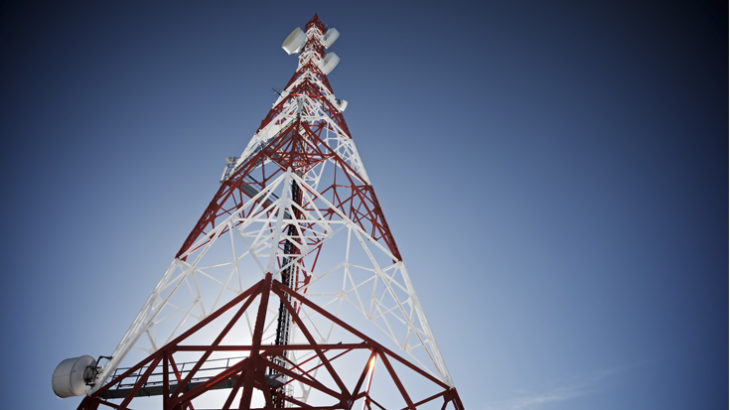Clear Signals for a Bright 5G Future

Are you all set for 5G? It’s the next leap forward in wireless broadband technology – and it’s on its way right now, promising super-speedy, ultra-reliable connectivity for the smartphones, tablets and other mobile devices that help us live our lives.
But if 5G is to fully realise its massive potential, some important challenges still need to be tackled.
That’s the starting-point for SENSE, a cutting-edge collaboration involving researchers at SES members King’s College London and Queen Mary University of London, working with the University of Bristol and some of the biggest names in technology.
Focusing on the vital issue of signal interference, SENSE has a clear goal: to help create a global 5G ecosystem that delivers on its potential and generates a world of opportunities for businesses, consumers, healthcare and other sectors.
The Next Generation
In the beginning there was 1G. The very first generation of wireless telecoms technology appeared way back in the early 1980s. Since then, each successive new ‘G’ has dramatically boosted capabilities – making a critical contribution to the communications and digital revolution that has changed the way we live, work and relax. And now we’re on the brink of the next chapter in the story.
“To realise the goal of ‘anywhere, anytime’ communications, it will be vital to maximise the carrying capacity of 5G infrastructure”
Dr Mohammad Shikh-Bahaei, King’s College London
Developed by a host of companies worldwide and demonstrated at the 2018 Winter Olympics in South Korea, 5G is more than just another technological advance. In the years ahead, it will be absolutely essential to coping with the projected surge in:
- Data volumes flowing across wireless networks as the number of net-connected devices reaches tens of billions.
- The complexity of apps and the data intensity of uploads/downloads as online demand ramps up for HD videos, 3D movies, Virtual Reality and much more besides.
Finding a way of tackling interference in duplex UDNs is the specific aim of SENSE, a 3-year project funded by EPSRC that started in 2017. (SENSE is short for Scalable Full Duplex Dense Wireless Networks.) Dr Shikh-Bahaei, Principal Investigator on the project, explains: “Network architectures capable of underpinning content-rich, low-latency 5G services require widespread commercial deployment of IFDC technology. But this, in turn, requires development of rigorous methods of interference cancellation.”
Stop interfering
Part of the solution could lie in a technique known as In-Band Full Duplex Communication (IFDC). This involves simultaneous transmission and reception of wireless signals using exactly the same frequency band – effectively doubling the channel capacity. In fact, the basic ‘duplex’ concept has been around for over 30 years. Now, though, the drive to deliver 5G has helped to put it right under the spotlight.
There’s a problem, though. IFDC can increase the risk of interference between signals – a risk that’s already a big potential issue for tightly packed UDNs. Interference has a negative effect on signal quality, reducing data throughput and slowing services down, so it needs to be eliminated or at least reduced to acceptable levels. This applies to:
- Interference between different users communicating through separate but adjacent network ‘nodes’.
- Self-interference – for example, where a user’s incoming and outgoing signals share a ‘node’ or channel in an IFDC set-up.
Finding a way of tackling interference in duplex UDNs is the specific aim of SENSE, a 3-year project funded by EPSRC that started in 2017. (SENSE is short for Scalable Full Duplex Dense Wireless Networks.) Dr Shikh-Bahaei, Principal Investigator on the project, explains: “Network architectures capable of underpinning content-rich, low-latency 5G services require widespread commercial deployment of IFDC technology. But this, in turn, requires development of rigorous methods of interference cancellation.”
Teaming with Benefits
Interference may be a single issue but it has many dimensions. So the process of devising effective solutions is multi-dimensional too, embracing both hardware and software and demanding an extensive range of analytical and practical skills. To provide the wide array of capabilities required, the SENSE team brings together leading-edge expertise across a number of organisations.
“Network architectures capable of underpinning content-rich, low-latency 5G services require rigorous methods of interference cancellation”
Dr Mohammad Shikh-Bahaei, King’s College London
“The core of what we’re doing here at King’s stems from our specialism in devising network protocols,” Dr Shikh-Bahaei explains. “Such protocols govern how devices communicate across wireless networks, so we’re developing new algorithms that will upgrade those protocols consistent with full duplex communication and interference minimisation”.
Co-Investigator Professor Arumugam Nallanathan, previously at King’s, is now based at Queen Mary. At Bristol, meanwhile, the focus of SENSE is on developing a prototype transceiver (a combined transmitter and receiver) built specifically for the purpose of interference reduction in full duplex set-ups.
Industrial partners include big-hitters such as Intel, Vodafone and Toshiba, adding an important dimension to SENSE. As well as providing valuable input and feedback, they will have a critical part to play in ensuring that results generated by the project are incorporated into commercial 5G networks. Journal papers and conference presentations by the SENSE team will also ensure wide dissemination of results across both industry and academia.
“The operational and commercial benefits of optimising full duplex communications in dense networks by minimising multi-user and self-interference can’t be overstated,” Dr Shikh-Bahaei concludes. “But in the final analysis, it’s about the end-user. In wireless communications, speed is crucial and full duplex communications can reduce latency in future networks. Take healthcare. When there’s an emergency situation, the stakes can be incredibly high and any delay in transmitting patient information could be fatal.
“Our work should add a crucial component to the 5G revolution and help next-generation wireless communication become increasingly indispensable and reliable, benefitting almost every aspect of our lives.”
Further Information
- Original KCL Press Release on SENSE grant award
- SENSE on the EPSRC database
- KCL Department of Informatics on:
- Further information on 5G (unrelated to the SENSE team)
Contacts
Dr Mohammad Shikh-Bahaei

